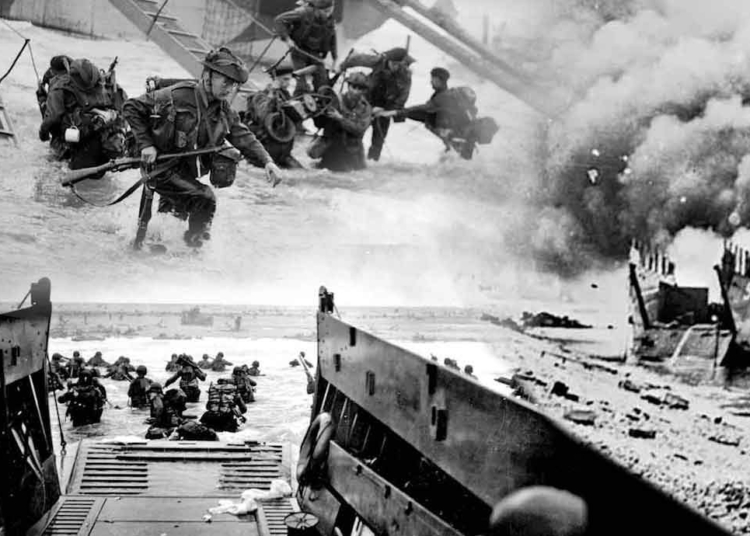Operation Overlord, also known as the Normandy Invasion, was the largest amphibious assault in history and a pivotal moment in World War II. This article explores the meticulous preparations and strategies employed by the Allies, including the United States, United Kingdom, and Canada, to ensure the success of Operation Overlord. The decision to launch the invasion in Normandy, the planning and preparation, the buildup of troops and equipment, the use of deception and misdirection, and the actual invasion itself are all discussed. Operation Overlord marked a turning point in the war and the bravery of the soldiers involved will forever be remembered.
Operation Overlord: How Allies Prepared for the Normandy Invasion
Introduction
Operation Overlord, also known as the Normandy Invasion, was the largest amphibious assault in history and a pivotal moment in World War II. This operation was the culmination of months of planning by the Allied forces, including the United States, United Kingdom, and Canada, to liberate Western Europe from Nazi occupation. In this article, we will explore the meticulous preparations and strategies employed by the Allies to ensure the success of Operation Overlord.
The Decision
The idea for a major assault on the German-held coast of France originated in 1943, and it was given the codename “Operation Overlord.” The military planners faced numerous challenges, including the selection of the landing site and the coordination of the various Allied forces. After much debate, it was decided that the invasion would take place in Normandy, a region on the northern coast of France. The date chosen for the operation was June 6, 1944, famously known as D-Day.
Planning and Preparation
The success of Operation Overlord relied heavily on meticulous planning and preparation. Allied forces faced significant obstacles, such as the notorious Atlantic Wall, a series of defenses constructed by the Germans along the French coastline. To overcome these barriers, the Allies launched an extensive intelligence-gathering campaign, with spies and aerial reconnaissance providing critical information about enemy positions and fortifications.
The Buildup of Troops and Equipment
In the months leading up to the invasion, a massive buildup of troops and equipment occurred. Allied forces conducted extensive training exercises to prepare soldiers for the challenges they would face on the beaches of Normandy. The logistical effort to transport troops, supplies, and equipment across the English Channel was immense, involving the assembly of a vast armada of ships, landing craft, and airplanes. The success of Operation Overlord relied on the ability to bring overwhelming firepower and manpower to bear on the German defenders.
Deception and Misdirection
The Allies employed a series of tactical deceptions to mislead the Germans about the location and timing of the invasion. Operation Bodyguard, a deception plan, included creating a fictitious military force and misleading radio communications to convince the Germans that the actual invasion would occur at Calais, further north from Normandy. This diversionary strategy successfully drew German reinforcements away from the actual landing sites, significantly weakening their defense.
The Invasion Begins
On the morning of June 6, 1944, thousands of Allied troops landed on the beaches of Normandy under heavy enemy fire. The invasion was supported by extensive naval and aerial bombardment, aimed at neutralizing German defenses. Despite initial resistance, the Allies managed to secure multiple beachheads and began pushing inland. Over the next few days, they successfully established a foothold in France, setting the stage for the eventual liberation of Western Europe from Nazi occupation.
The Legacy of Operation Overlord
Operation Overlord marked a turning point in World War II. The successful invasion of Normandy paved the way for the eventual defeat of Nazi Germany. The Allied forces’ ability to coordinate and execute such a complex and large-scale operation showcased their strategic prowess and determination to liberate Europe from the clutches of tyranny. The bravery and sacrifice of the soldiers who participated in Operation Overlord will forever be remembered as one of the defining moments of the 20th century.
Conclusion
Operation Overlord, the largest amphibious assault in history, remains an iconic event that changed the course of World War II. The Allies’ meticulous planning, intelligence gathering, troop buildup, and strategic deceptions played crucial roles in the success of this operation. The invasion of Normandy marked a crucial step towards the ultimate defeat of Nazi Germany. The bravery and heroism displayed by the soldiers who participated in Operation Overlord will never be forgotten.













